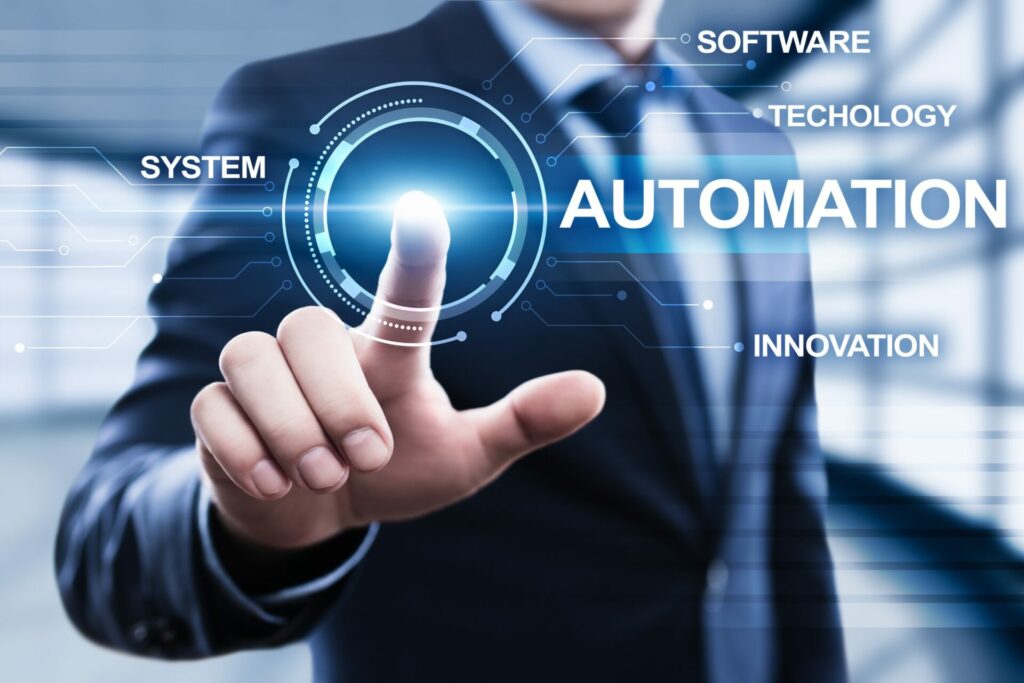
Gartner defines the term “hyperautomation” as a business-driven, disciplined approach that organizations use to rapidly identify, vet, and automate as many business and IT processes as possible. Think of hyperautomation as automation on steroids. This is a strategy used to combine multiple digital technologies to drive higher performance than the individual technologies operating separately. A great example is combining Artificial Intelligence (AI) with Robotic Process Automation (RPA). Hyperautomation is a technology strategy you should evaluate if you are considering an investment in automation or AI.
What is the Future of Hyperautomation?
Those unfamiliar with this term might be hesitant to invest any time or effort into an unknown concept. It is important to have a good understanding of what might be possible as a result of this emerging trend. Gartner, a leading technology research firm that specializes in technology trends, began talking about hyperautomation about 4 years ago.
Gartner identified Hyperautomation as one of the most important technology trends of 2019. Since that time, the company has released several other predictions on the repercussions of this trend. The potential impact of what could become is quite significant. Three notable predictions are included below (source):
- By 2024, organizations will lower operational costs by 30 percent by combining hyperautomation technologies with redesigned operational processes.
- By 2024, more than 70% of large global enterprises will have over 70 concurrent hyperautomation initiatives.
- By 2025, more than 20% of all products will be manufactured, packed, shipped, and delivered without being touched
The prospect of cutting operational costs by 30 percent should get your attention. As we enter 2023 with an increasing potential for an economic downturn, most firms are now in cost-cutting mode. The focus and interest in hyperautomation should continue to be strong.
COVID-19 accelerated the pace of digital investment and transformation. This shift led to even greater reliance on how to improve operational efficiency and business resilience. It has also generated a substantial increase in spending to implement these strategies. Companies are now faced with the challenge of maintaining long-term digital transformation strategies while identifying areas for cost reduction.
The other factor at play here is business resilience. The extreme volatility that has occurred over the past two years has taught organizations that investment must be made to ensure change can be implemented quickly and efficiently. This is a new requirement for staying in business
This article, Improving Resilience in the Real Estate and Title Industries, offers further insights into why organizations must invest in new programs to improve business resilience.
The Increasing Value of Data & Data Governance
Businesses seeking to run at a high level of performance rely heavily on data. Business intelligence optimizes business processes and delivers higher levels of profitability and customer satisfaction. Efficiently processing all of this information is placing enormous pressure on IT teams to deliver systems and processes to accommodate the higher volume of information – and to do so without adding staff.
But there is another trend that is accompanying the investment in gaining access to valuable data – to protect it from unauthorized access. Several data privacy initiatives are now in place with onerous penalties for non-compliance that are over and above the brand degradation possible from repeated data breaches or a loss of confidentiality of customer records.
What makes the protection of data so difficult in the United States is that today there is no single national data privacy law. Instead, a series of initiatives exist, including HIPAA, FCRA, FERPA, GLBA, ECPA, COPPA, and VPPA. Some states, however, have taken the initiative to pass data privacy laws that will bring this issue to the forefront.
California instituted the California Consumer Privacy Act (CCPA). This act became law on January 1, 2020. The CCPA protects consumers from mismanagement of their personal data. This law provides consumers with better control over the data that is collected about them (source). The penalties for non-compliance are onerous, which is gaining public attention.
A greater focus on data privacy is resulting in much higher attention on data governance. Automation strategies must now consider the privacy of data that is part of every process. Data must be secure and private. Data used in processes, applications, and databases now must be strictly governed. Access to that data must be limited to just those with admin privileges. This security hierarch, however, means that the potential risk of data mismanagement can be significantly reduced.
Completely Automated Business Processes
The third prediction is remarkable. If more than 20% of all products will be manufactured, packed, shipped, and delivered without being touched, then the first person to touch these products will be the customer. In order for this vision to be achieved, it will be necessary for manufacturers to establish a fully automated value chain. This can only happen as a result of hyperautomation. Tasks are organized and scheduled as end-to-end automated processes. These can be more efficient, reliable, and scalable, so easier to adapt.
This transformation will likely impact other organizations beyond manufacturers. Some financial services products are available this way today. Websites offer simple loan applications and approval processes administered almost entirely without human interaction.
Learn more about how hyperautomation is already being implemented at some innovative financial services firms, What Is Fintech And What Is Driving Its Growth?
The Future is Now
What should now be clear is that the rate of investment in automation strategy has accelerated substantially. This investment is driving new business growth, opportunities, and competitive threats. The rate of change has been so fast that it is causing some companies to miss opportunities and now be scrambling in trying to rethink business models.
Those organizations that invest in intelligent business models where speed, agility, and responsiveness are best-in-class will be the companies that lead their industries in the future. What side of history do you want to be on?
